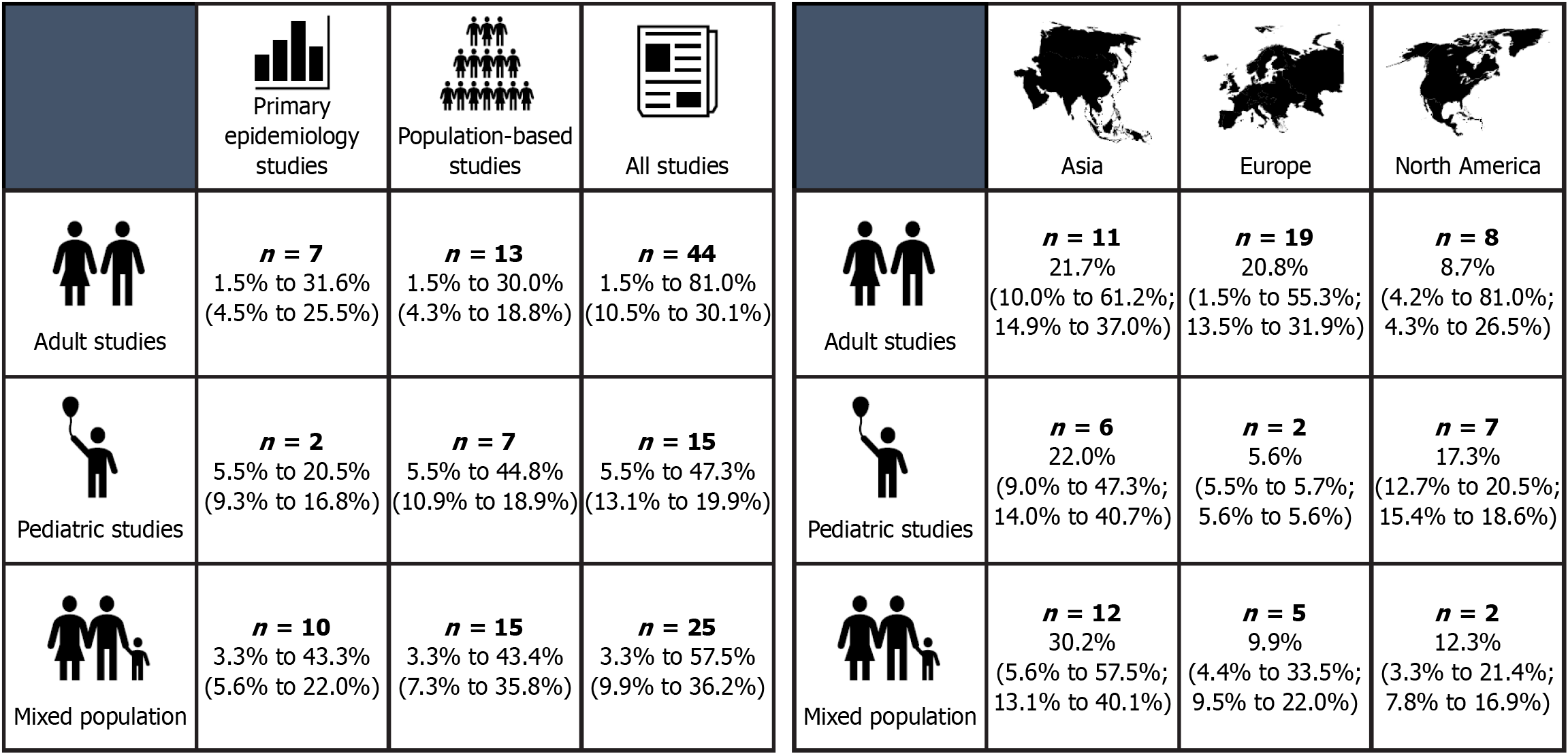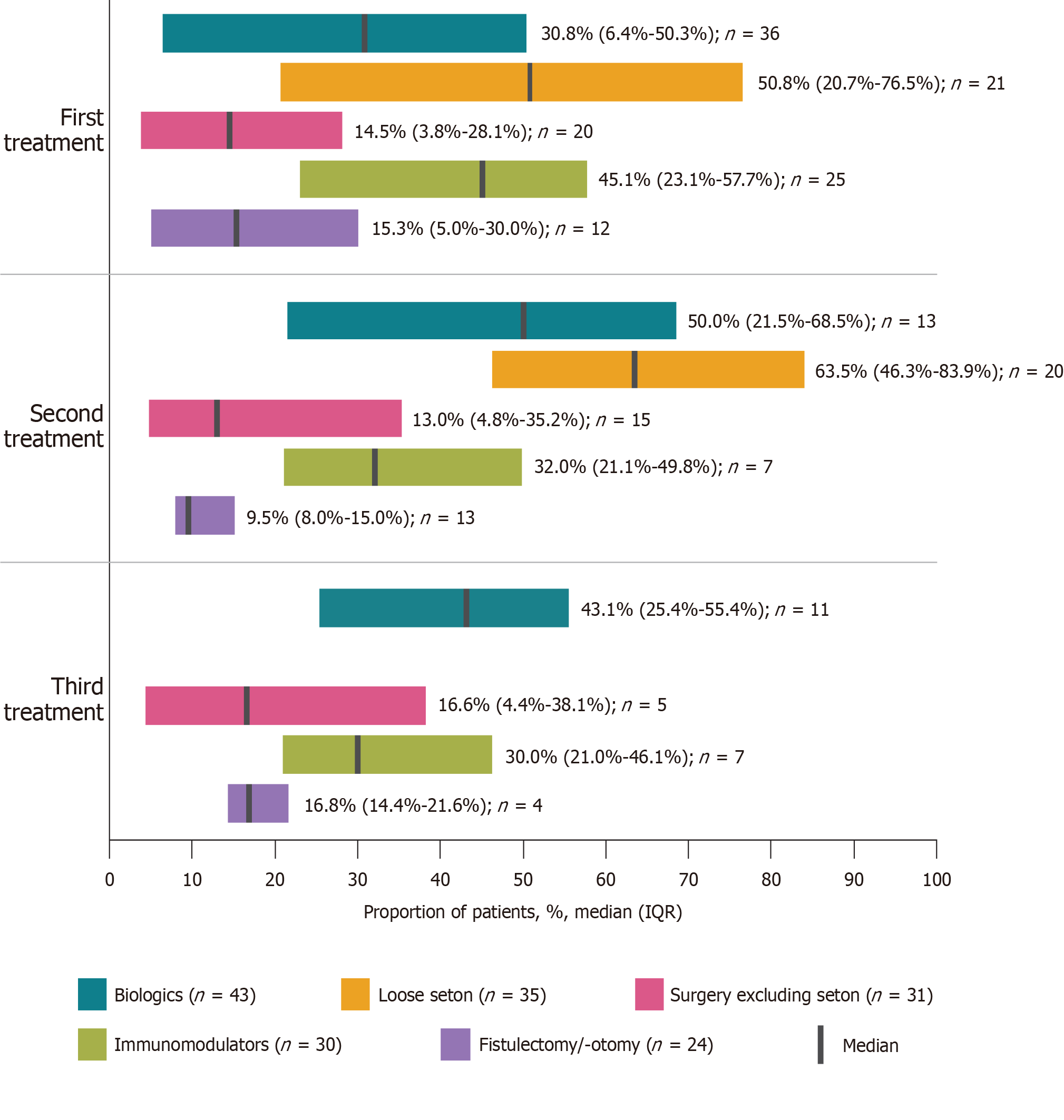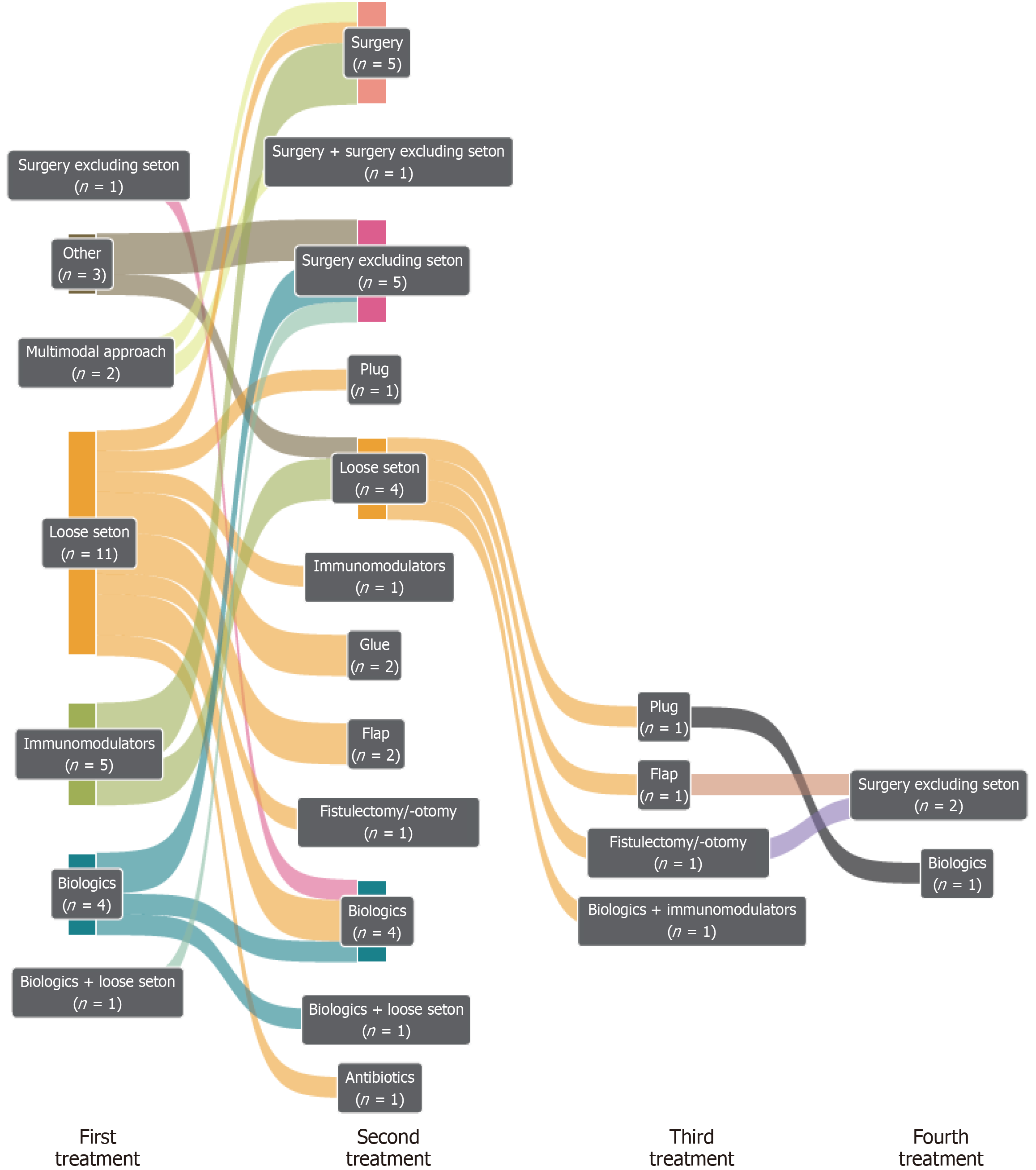Copyright
©The Author(s) 2025.
World J Gastrointest Surg. Jul 27, 2025; 17(7): 101767
Published online Jul 27, 2025. doi: 10.4240/wjgs.v17.i7.101767
Published online Jul 27, 2025. doi: 10.4240/wjgs.v17.i7.101767
Figure 1 Crohn’s perianal fistula prevalence in adult, pediatric, and mixed populations across study types and geographical location.
Data are presented as range (interquartile range) for study type and median [range (interquartile range)] for geographical region. Only studies reporting relevant data are included.
Figure 2 Proportions of patients with Crohn’s perianal fistulas receiving one of the top five most frequently reported interventions used as first, second, or third treatment within a study.
Numbers in the key represent the number of studies reporting the intervention as the first, second, and/or third treatment in a study; some studies reported an intervention in more than one line of treatment. Numbers above the bars are median (interquartile range) proportion of patients; number of studies. Loose seton was not reported as a third treatment in any studies. IQR: Interquartile range.
Figure 3 Treatment algorithms showing the first, second, third, and fourth treatments among studies showing sequential treatments (n = 15).
The first treatment in a study is presented on the left of the figure with the number of corresponding treatment algorithms. The lines then flow to the next treatment mentioned in the studies; line thickness corresponds to the number of treatment lines. Of note one study may report more than one treatment per line; for example, one study by Graf et al[49] reported that patients underwent loose seton placement as a first treatment followed by fistulectomy/-otomy, advancement flap, or plug, representing three different treatments as a second treatment in this study.
- Citation: McKay C, Bolzani A, Kienzle S, Geransar P, Panés J. Epidemiology, treatment patterns, and associated risk factors in perianal fistulizing Crohn’s disease: A systematic literature review. World J Gastrointest Surg 2025; 17(7): 101767
- URL: https://www.wjgnet.com/1948-9366/full/v17/i7/101767.htm
- DOI: https://dx.doi.org/10.4240/wjgs.v17.i7.101767















